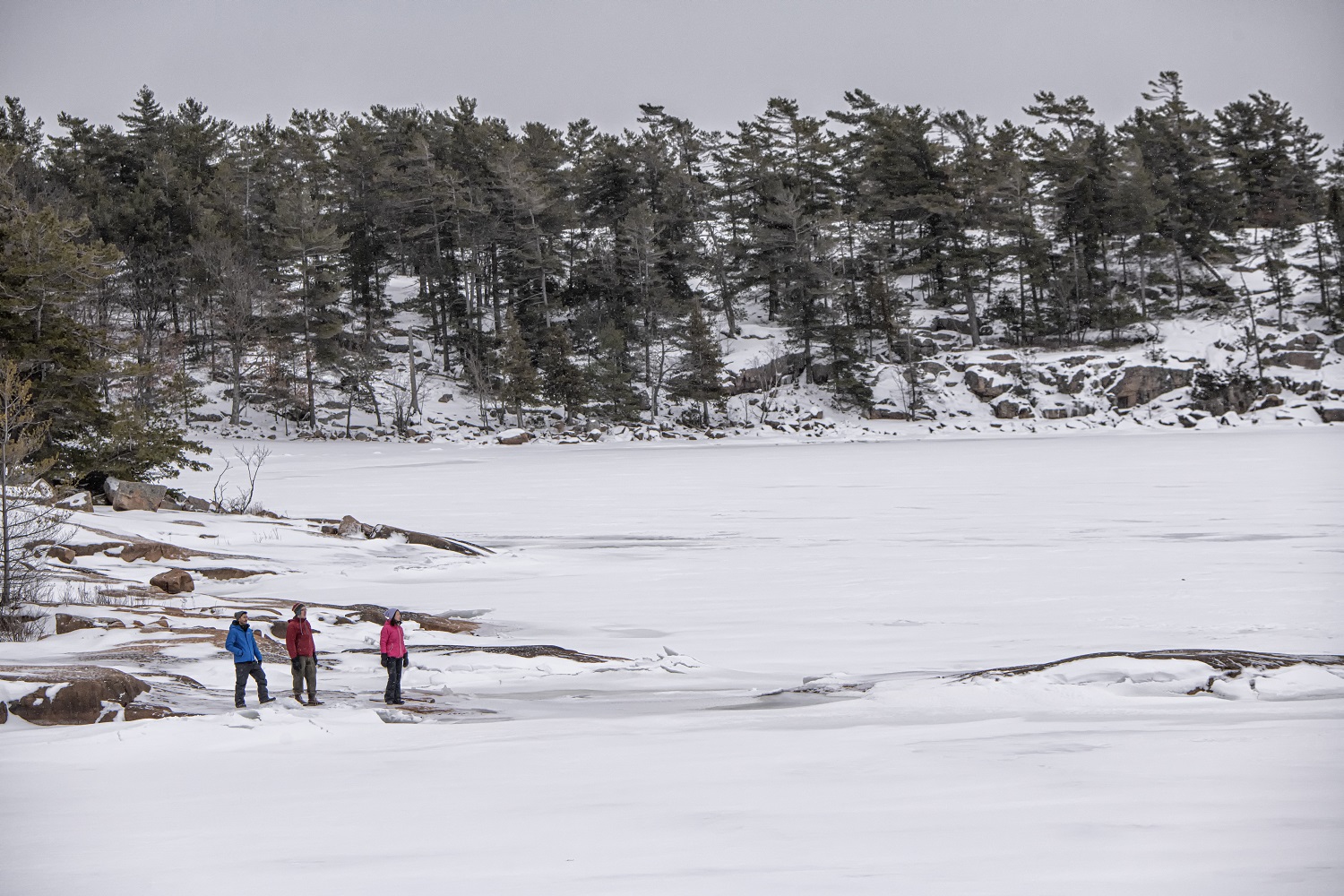
Today’s post comes from Parks Program Educator Lauren Storey at Balsam Lake Provincial Park.
At Balsam Lake, Halloween isn’t just a holiday, it’s a chance to explore the eerie elegance of the natural world.
As the leaves turn and the air grows crisp, we turn our attention to some of the park’s most mysterious and misunderstood creatures.
From tiny predators with haunting habits to winged hunters cloaked in seasonal colors, these animals embody the spirit of the season in the most unexpected ways. Join us as we uncover the strange, the spooky, and the spectacular wildlife that call Balsam Lake home.
~
American Redstart — the feathered phantom of the forest
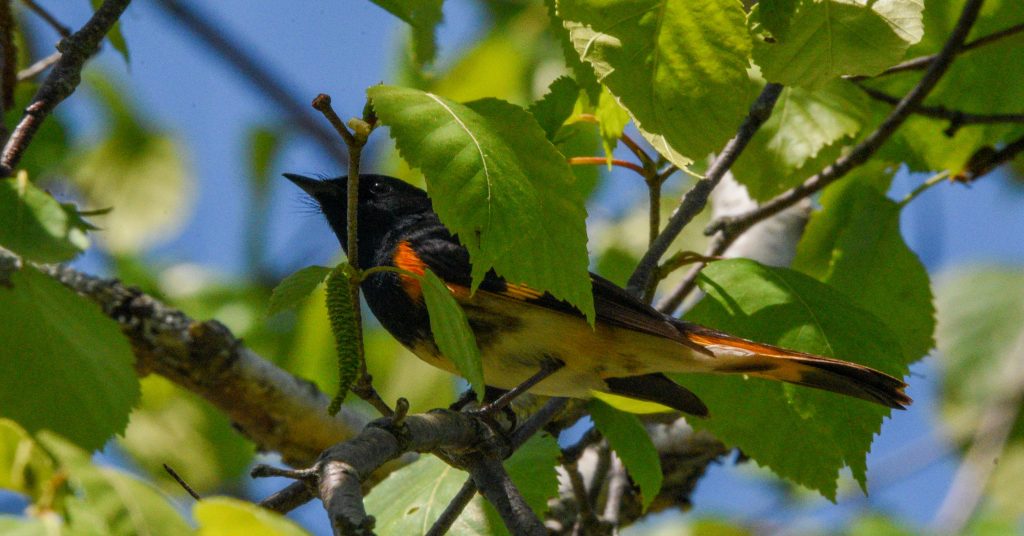
Clad in vivid black and orange plumage, the American Redstart looks as though it’s dressed for Halloween all year long.
But this bold coloration isn’t just for show; it plays a key role in the bird’s unique hunting technique.
As a gleaner, the Redstart forages by picking insects off leaves and branches, but it also uses sudden flashes of its bright tail and wing feathers to flush hidden prey into motion.
Once the insects move, the American Redstart quickly darts after them with remarkable agility.
This blend of stealth and surprise, paired with its haunting beauty, makes the Redstart a fitting symbol of the season’s mysterious charm.
~
Bats — misunderstood guardians of the night
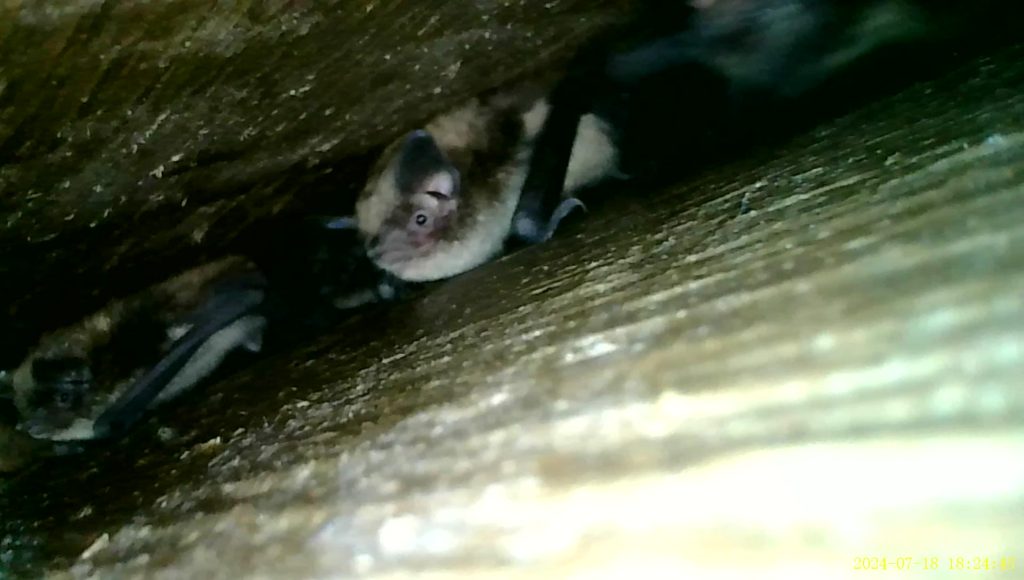
Often shrouded in superstition and fear, bats have long been cast as eerie symbols of the night.
Yet in reality, they are among the most beneficial creatures in our ecosystems! Far from being spooky, these nocturnal mammals play a vital role in controlling insect populations, consuming thousands of mosquitoes and agricultural pests each night.
Despite persistent myths linking them to darkness and danger, bats are gentle, intelligent animals that contribute significantly to biodiversity and environmental health.
This Halloween, let’s spread the word: bats aren’t the villains of the night, but rather its heroes (especially for campers tired of mosquito bites).
And if you’re still worried about vampires, don’t be! Ontario Parks is home to eight species of bats, and not one of them drinks blood. The infamous vampire bat? That species lives far to the south and won’t be making an appearance at Balsam Lake (or anywhere in Ontario) anytime soon.
~
Northern Black Widow — the femme fatale of the forest
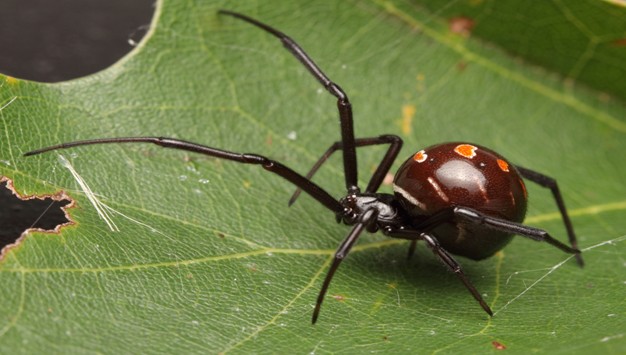
Among Ontario’s most infamous arachnids, the Northern Black Widow (Latrodectus variolus) evokes both fear and fascination.
The female is easily recognized by her glossy black body and distinctive red markings different from the iconic hourglass shape found on her southern cousin, the Southern Black Widow (Latrodectus mactans).
She’s best known for her dramatic and often deadly mating ritual: after courtship, the female may consume her mate, a behavior that, while unsettling, provides a source of nourishment for her developing offspring.
Despite their potent venom, Northern Black Widows are shy and reclusive, preferring to avoid human contact whenever possible. Their presence in the ecosystem is a reminder of nature’s complexity, where even the most feared creatures play a crucial role in maintaining ecological balance.
~
Ravens and crows — the winged symbols of mystery
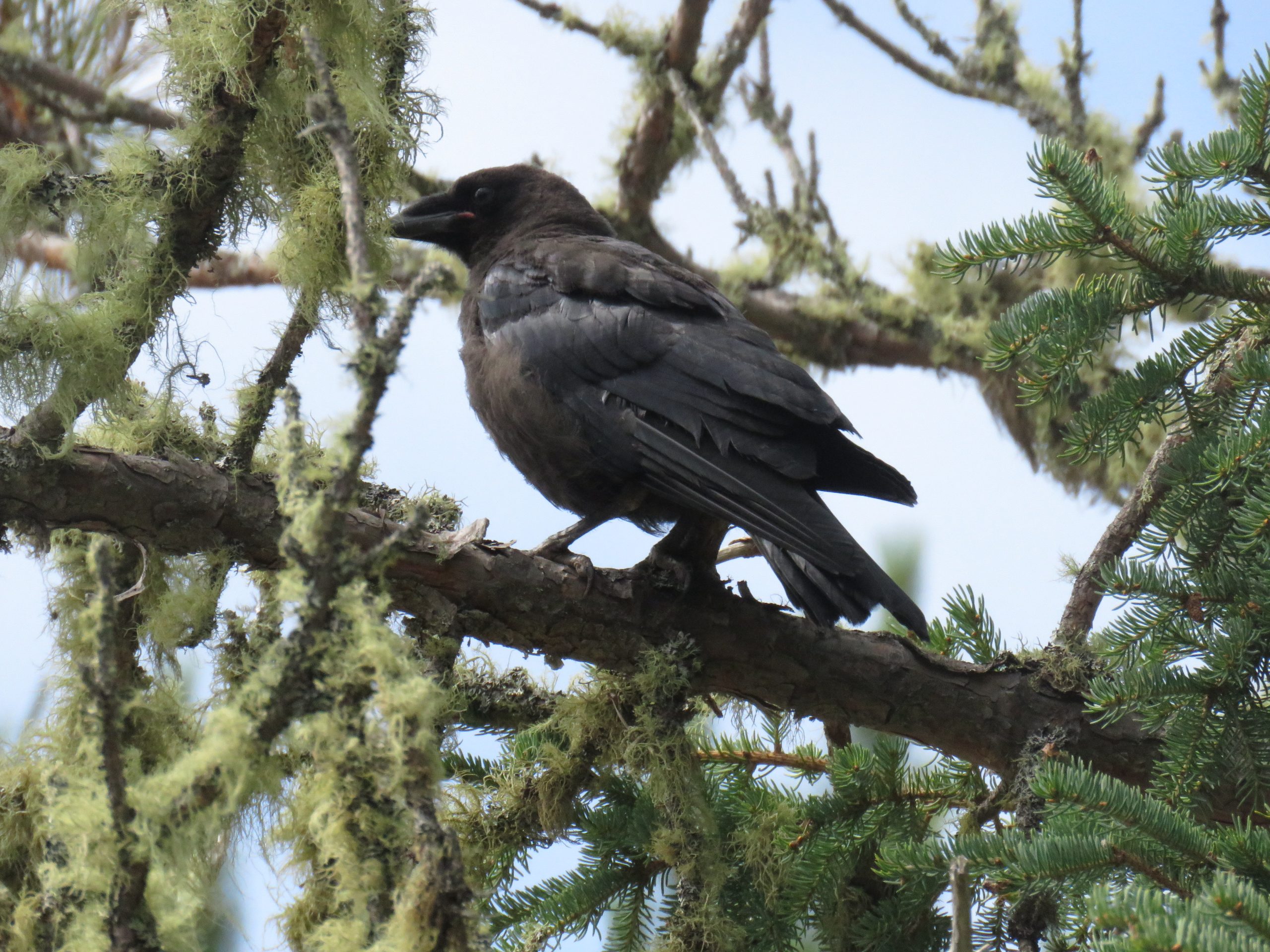
Long associated with omens and the supernatural, ravens and crows have earned a permanent place in Halloween lore, thanks in part to Edgar Allan Poe’s haunting tale “The Raven”.
But did you know they are also known as messengers that bring wisdom and teachings?
These highly intelligent birds are not only steeped in myth but have remarkable intelligence. They are some of the only species of animals known to craft and use tools, plan ahead, and even barter!
A group of crows is ominously called a murder, while a gathering of ravens is known as an unkindness; names that only add to their eerie reputation.
Often heard before they are seen, these birds are capable mimics, able to replicate the calls of other animals and even human speech. Their complex social structures, problem-solving abilities, and adaptability make them some of the most fascinating and misunderstood creatures in the animal kingdom!
~
Loggerhead Shrike — nature’s tiny executioner

Despite its modest size and unassuming appearance, the Loggerhead Shrike is one of the most intriguing and macabre predators found at Balsam Lake.
This bird has earned the chilling nickname “butcher bird” due to its unique and gruesome hunting strategy.
Unlike birds of prey that rely on powerful talons, the Shrike compensates by impaling its victims ranging from insects to small vertebrates on sharp thorns or barbed wire.
These makeshift skewers serve both as a method of subduing prey and as a grisly storage system for future meals.
This behavior, while unsettling, is a remarkable example of evolutionary adaptation and a haunting reminder of the complex survival strategies found in the natural world.
~
Halloween Pennant — the winged hunter in costume
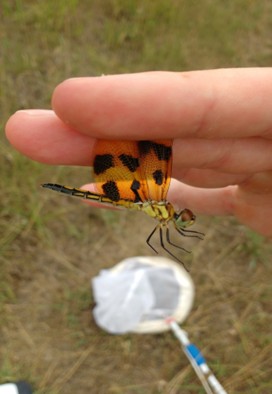
With its striking orange and black wings, the Halloween Pennant dragonfly looks like it’s dressed for the season year-round — no costume required!
This festive flair isn’t just for show. Blending in perfectly with bare branches and sunlit perches, its coloration offers just enough camouflage to keep it hidden from predators while scanning the skies for its next meal.
Agile, silent, and surprisingly fierce, the Halloween Pennant spends its days patrolling the air above Balsam Lake, snatching up smaller insects mid-flight. (Especially mosquitoes — thanks Halloween Pennant!)
A single dragonfly can devour hundreds, even thousands, of these pests in its lifetime. So while it may look like a delicate decoration fluttering through the fall air, this insect is a highly skilled predator. The Halloween Pennant is a perfect emblem of nature’s eerie elegance.
~
A season of shadows and wonder
As Halloween approaches and the forest takes on its golden hues, Balsam Lake becomes a stage for some of nature’s most captivating and misunderstood creatures.
From birds that impale their prey to spiders with deadly courtship rituals, each species tells a story that is both eerie and extraordinary.
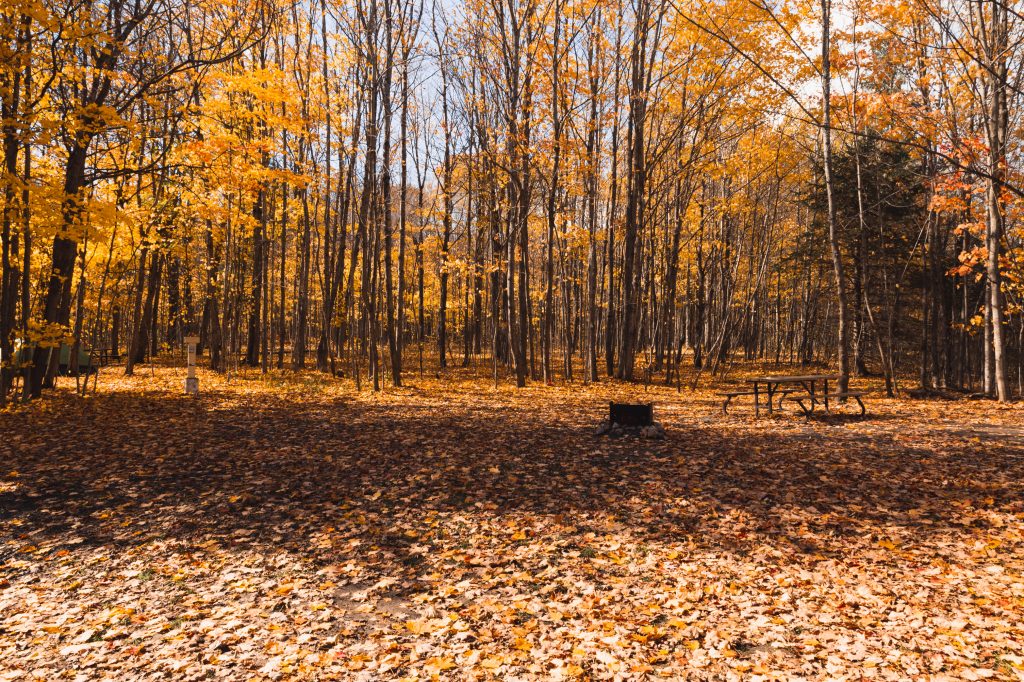
These animals are not just symbols of the season; they are vital parts of the ecosystem, each playing a unique role in the balance of life. By looking beyond the myths and embracing the mystery, we gain a deeper appreciation for the wild world around us.
So, this Halloween, take a moment to listen to the rustle of wings, the whisper of leaves, and the quiet presence of creatures that make Balsam Lake a place of both natural beauty and haunting wonder.
~
Protecting the creatures
As you explore the wonders of Balsam Lake (or whatever natural space you love) this season, remember that even the spookiest creatures need a safe and healthy habitat to survive.
Fallen leaves, dead wood, and brush piles may look messy to us, but they provide essential shelter, food, and nesting sites for many of the animals featured in this post.

Please avoid burning leaves or collecting firewood from the forest floor. What may seem like debris is often a lifeline for wildlife.
By treading lightly and respecting the natural world, we ensure that these eerie and extraordinary species continue to thrive for many, many Halloweens to come.


